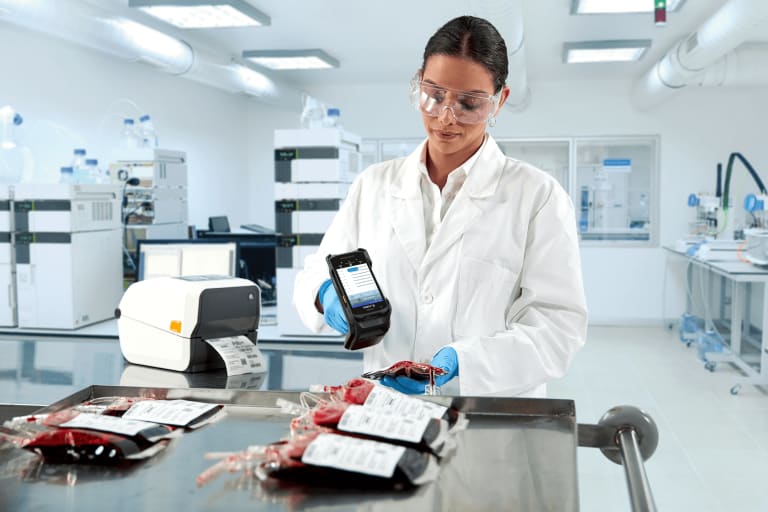
How Patient Monitoring Improves Quality Care
Arguably, the most important aspect of healthcare is delivering safe, high-quality patient care while remaining cost-effective. One part of patient care that can often be overlooked is the treatment process or how a patient is moved through their stay. Patients are handed off dozens of times during their inpatient stay, leading to miscommunication or a breakdown in quality care.
Fortunately, Strategic Systems, powered by Zebra technology, has a simple, easy-to-use system that will increase the quality of care while reducing costs. Using real-time location technology, hospitals can track patients and monitor their stay. This visibility allows staff members to see patient location, time spent in different departments, insight into their treatment plans, and progress reports.
These systems are imperative for life-threatening situations where information must be known quickly, such as during cardiac arrest or for circumstances involving infants or elderly patients who may not be able to vocalize their issues.
What Systems Should I Use?
Patient care has never been made easier than with Radio Frequency Identification (RFID) and Real-Time Locating Systems (RTLS). Using radio frequency, tags and wristbands can be provided to all patients to monitor their stay, and with RTLS, they can be tracked in real-time, providing more visibility. These Zebra systems can come in many forms but can be broken down into five categories.
- RFID Readers and Scanners - Use them to identify patients quickly or place them on products and equipment for easy tracking and locating.
- Mobile Computers - Provide healthcare workers real-time information like patient location, vitals, and medical history.
- RFID Printers - Print custom tags and wristbands unique to each item and patient.
- RFID Antennas - Track RFID tags with a simple-to-manage, wireless antenna.
- RTLS - Track patients in real-time. Exceptional at navigating through multi-path building layouts.
How RFID and RTLS Improve Patient Care
While there are many ways RFID and RTLS can improve the hospital environment, there are three critical areas for monitoring patients. These functions also make the workload easier on hospital staff, making their jobs more straightforward, reducing error, and increasing productivity.
- Time-To-Treatment: Hospital overcrowding is a common problem that can lead to fatal outcomes. Overcrowding leads to treatment delays, increased readmissions, longer stays, higher mortality rates, and higher costs. Being able to track patients with Zebra technology accurately makes it so the staff can treat each patient effectively while remaining available for critical needs.
- Patient Flow: Like overcrowding, bottlenecks in patient flow affect the quality of care. Strategic Systems allow hospitals to run at maximum efficiency while increasing patient satisfaction and accelerating the pace of discharge.
- At-Risk Patients: Hospitals should be safe and secure environments for all patients, including infants and the elderly, who have the highest risks. Being able to track newborns and cognitively impaired patients is a top priority. Tracked in real-time, alerts will sound if the tags move past certain areas or thresholds.
To learn more about increasing your quality of care, contact Strategic Systems today for a consultation on which Zebra products suit you.
